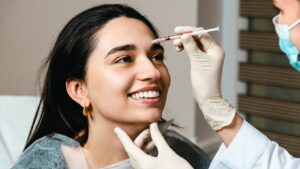Key Takeaways
- Educating Through Imagery: Preventive health care images, including infographics and diagrams, simplify complex health information, making it more accessible and engaging for diverse audiences.
- Enhancing Understanding: Visual content improves patient understanding of health concepts, helping individuals grasp critical information regarding preventive measures like screenings and vaccinations.
- Promoting Proactive Behaviors: Well-designed visuals encourage individuals to adopt healthier lifestyle choices and adhere to preventive practices, ultimately improving health outcomes.
- Advancements in Technology: Innovations in imaging equipment and the integration of artificial intelligence enhance the effectiveness and accuracy of preventive health care imaging.
- Addressing Challenges: Ongoing issues such as access and affordability, along with ethical considerations, must be addressed to ensure equitable distribution and utilization of preventive health care imaging services.
In today’s fast-paced world, preventive health care has emerged as a cornerstone for maintaining overall well-being. Visual representations of preventive health care can play a crucial role in educating individuals about the importance of proactive measures. From infographics illustrating vaccination schedules to images depicting healthy lifestyle choices, these visuals make complex information accessible and engaging.
As awareness grows around the significance of prevention, the demand for effective visual content also increases. These images not only capture attention but also inspire action, helping people to embrace healthier habits. By harnessing the power of imagery, health professionals can communicate vital messages that resonate with diverse audiences, ultimately leading to a healthier society.
Preventive Health Care Images
 Preventive health care images play a vital role in enhancing understanding of proactive health measures. These images, including infographics, diagrams, and illustrations, present complex concepts in a visually appealing manner. They simplify information about screenings, vaccinations, nutrition, and exercise, aiding individuals in making informed health decisions.
Preventive health care images play a vital role in enhancing understanding of proactive health measures. These images, including infographics, diagrams, and illustrations, present complex concepts in a visually appealing manner. They simplify information about screenings, vaccinations, nutrition, and exercise, aiding individuals in making informed health decisions.
Clear visual content boosts awareness of preventive health practices. Statistics show that incorporating images in health communications increases retention and comprehension rates. Health organizations leverage these visuals to convey critical information, targeting diverse audiences effectively.
Examples of preventive health care images include:
- Infographics: Combine statistics and visuals to outline health risks and preventive strategies.
- Charts: Display vaccine schedules or growth milestones, helping users track important health indicators.
- Illustrations: Depict healthy lifestyle practices, such as proper nutrition or physical exercise, encouraging healthier habits.
- Posters: Promote awareness campaigns on diseases like diabetes or heart disease, illustrating prevention techniques and risks.
Effective use of preventive health care images facilitates broader engagement, ultimately contributing to improved public health outcomes.
Importance of Preventive Health Care Images
Preventive health care images serve a critical role in promoting health awareness and understanding. These visuals not only simplify information but also foster engagement, making health education more impactful.
Enhancing Patient Understanding
 Visual content significantly enhances patient understanding of complex health topics. Infographics break down intricate data into digestible formats, allowing patients to grasp key health concepts quickly. Diagrams illustrate processes such as screenings or vaccination schedules, clarifying procedures that may seem daunting. Illustrations depict healthy lifestyle choices, making it easier for individuals to visualize and adopt positive behaviors. By utilizing color, symbols, and clear labeling, images cater to diverse learning styles, ensuring that information resonates with various audiences.
Visual content significantly enhances patient understanding of complex health topics. Infographics break down intricate data into digestible formats, allowing patients to grasp key health concepts quickly. Diagrams illustrate processes such as screenings or vaccination schedules, clarifying procedures that may seem daunting. Illustrations depict healthy lifestyle choices, making it easier for individuals to visualize and adopt positive behaviors. By utilizing color, symbols, and clear labeling, images cater to diverse learning styles, ensuring that information resonates with various audiences.
Improving Health Outcomes
Health outcomes improve as individuals make informed decisions based on visual information. Clear and attractive health images increase the likelihood of patients adhering to preventive measures, such as vaccinations or regular screenings. Effective imagery promotes proactive health behaviors, leading to early detection of diseases. By supporting campaigns with well-designed visuals, health organizations foster a culture of prevention, ultimately reducing healthcare costs and enhancing community well-being. Research indicates that health literacy increases when people engage with visual content, translating to better health practices and outcomes.
Types of Preventive Health Care Images
Preventive health care images come in various forms, each serving a unique purpose in educating and informing individuals about health measures. These images enhance comprehension while promoting proactive health behaviors.
Diagnostic Imaging Techniques
Diagnostic imaging techniques visualize internal body structures and functions, aiding in early disease detection. Common examples include:
- X-rays: Useful for examining bones and detecting fractures, pneumonia, and other conditions.
- MRI scans: Provide detailed images of soft tissues, useful for diagnosing neurological disorders and musculoskeletal issues.
- CT scans: Combine X-ray images from different angles, offering comprehensive views that help identify tumors, internal injuries, or diseases.
These imaging techniques play a crucial role in identifying health issues before they escalate, allowing for timely interventions.
Screening Methods
Screening methods utilize images to assess health risks and detect potential health issues early. Key screening methods include:
- Mammograms: X-ray images of breast tissue used to detect breast cancer in its early stages.
- Pap smears: Visual assessments of cervical cells to screen for cervical cancer or precancerous conditions.
- Colonoscopy images: Visual inspections of the colon, utilized to detect colorectal cancer and polyps.
These screening methods form a vital part of preventive health care, enabling early diagnosis and treatment options.
Technologies in Preventive Health Care Imaging
Advancements in technology significantly enhance preventive health care imaging, improving diagnostics and patient outcomes. Innovations in imaging equipment and the integration of artificial intelligence play crucial roles in this evolution.
Innovations in Imaging Equipment
Innovations in imaging equipment, like portable ultrasound devices, high-resolution digital X-rays, and advanced MRI machines, enhance accessibility and precision in preventive health care. Portable ultrasound devices offer real-time imaging in diverse settings, improving access for underserved populations. High-resolution digital X-rays reduce exposure to radiation while providing clearer images for accurate diagnoses. Advanced MRI machines enable detailed imaging of soft tissues, aiding early detection of conditions such as tumors or injuries. These advancements streamline the diagnostic process and make preventive care more efficient and effective.
Role of Artificial Intelligence
Artificial intelligence significantly transforms the landscape of preventive health care imaging by enhancing image analysis and facilitating predictive modeling. AI algorithms analyze large datasets quickly, identifying patterns and anomalies that may indicate health issues. For instance, AI can assist radiologists in detecting early signs of diseases like cancer in imaging scans, improving diagnostic accuracy. Additionally, AI-powered tools can predict individual health risks based on imaging data and medical history, enabling tailored preventive strategies. Integrating AI into imaging practices fosters more accurate assessments and quicker decision-making, ultimately promoting proactive health management.
Challenges in Preventive Health Care Imaging
Preventive health care imaging faces various challenges that impede its effectiveness in promoting proactive health measures. Key issues include access and affordability, as well as ethical considerations that arise in the utilization of imaging technologies.
Access and Affordability Issues
Access to preventive health care imaging remains a significant barrier for many individuals. Limited availability of services, especially in rural areas, restricts opportunities for routine screenings and diagnostic imaging. High costs associated with imaging procedures often deter individuals from seeking necessary care. Insurance coverage varies, leading to disparities in access; many patients face out-of-pocket expenses that may prove prohibitive. For instance, the average cost of a mammogram can range from $100 to $250, depending on the facility and insurance coverage. Addressing these access and affordability issues is essential to ensure that preventive imaging becomes a standard aspect of health care for everyone.
Ethical Considerations
Ethical considerations in preventive health care imaging involve balancing the benefits of early detection with potential drawbacks. Concerns arise regarding overdiagnosis and overtreatment, especially when imaging identifies conditions that may not require intervention. Misinterpretation of results can lead to unnecessary anxiety and medical procedures, raising questions about informed consent and patient autonomy. Additionally, the equitable distribution of imaging resources is critical; marginalized populations may face inequity in both access to technology and quality of care. Health organizations must navigate these ethical dilemmas to foster trust and ensure that preventive imaging serves the best interests of patients while promoting health equity across diverse communities.
Preventive health care images play a vital role in enhancing public understanding of health practices. By transforming complex information into engaging visuals, they empower individuals to make informed health decisions. As technology advances and accessibility improves, the impact of these images is set to grow.
Health organizations can leverage these tools to foster a culture of prevention and promote better health outcomes. Addressing challenges related to access and equity will ensure that everyone benefits from these critical resources. Ultimately, the effective use of preventive health care images can lead to a healthier society where proactive health measures are the norm.



